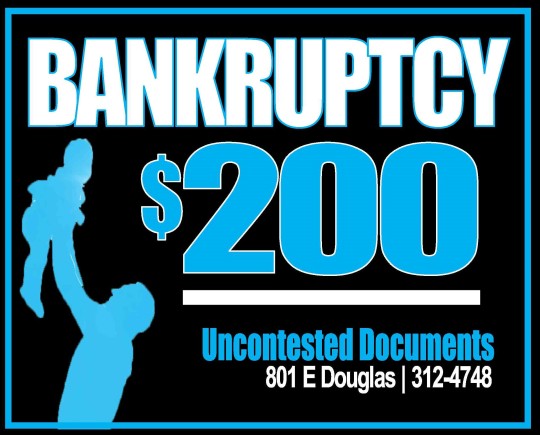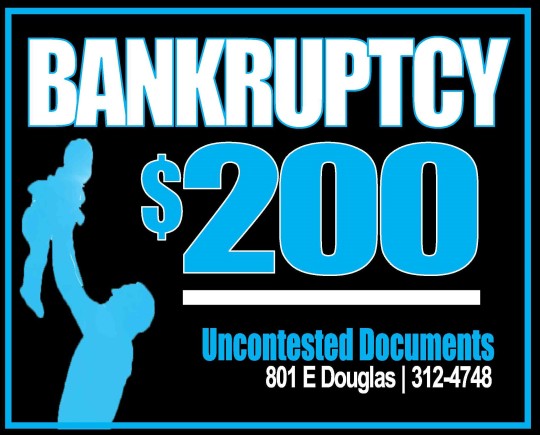#bankruptcy court
Explore tagged Tumblr posts
Text
David Walliams Faces HMRC Bankruptcy Petition
David Walliams, best known for his work with Matt Lucas on the BBC sketch comedy series Little Britain and Come Fly With Me, is facing a HMRC Bankruptcy Petition. Walliams served as a judge on Britain’s Got Talent. Additionally, he is a successful children’s book author, having sold more than 50 million copies worldwide. Recently, David Walliams has been involved in a legal matter concerning a…
#bankruptcy#bankruptcy court#Bankruptcy Defence#bankruptcy order#Bankruptcy Petition#Bankruptcy Solicitors#HMRC#HMRC Bankruptcy Petition#HMRC debt#HMRC Petition#Insolvency#Insolvency Act#Insolvency Act 1986#Insolvency Advice#Insolvency applications#Insolvency Court#Insolvency Law#Insolvency news#Insolvency Rules#insolvency solicitors
0 notes
Text

In Wichita, for bankruptcy, can I self-file and represent myself? | YES. The general rule is the simpler your bankruptcy, the better your chances are of completing it on your own and receiving a bankruptcy discharge, the order erasing debt. Your case is likely simple enough to handle without an attorney if:
You pass the first portion of the Chapter 7 means test because your yearly household income is less than the state median.
You don't own much property and can protect your assets with exemptions.
You don't have any priority debts you can't discharge.
Creditors aren't alleging you committed fraud or threatening other action against you.
However, even straightforward Chapter 7 cases require work. Plan on filling out extensive paperwork, gathering financial documentation, researching bankruptcy and exemption laws, and following local rules and procedures. | Source of Information: NOLO
Bankruptcy Package Two Payments of $100 Excludes Filing Fee
Uncontested Documents 801 E. Douglas, 2nd Fl., Wichita (316) 312-4748 | Call or Text https://www.uncontesteddocuments.com [email protected]
Since 2011, Thank You Grateful To Be Of Service
0 notes
Text
Bankruptcy Attorney In Homosassa
Bankruptcy Attorney In Homosassa - #jayweller #bankruptcy, #Bankruptcyassistance, #Bankruptcyattorneys, #BankruptcyLawyer, #Chapter13, #Chapter7, #FilingForBankruptcy, #Homosassa, #Law, #Tips, #WellerLegalGroup - https://www.jayweller.com/bankruptcy-attorney-in-homosassa/
#Attorney#bankruptcy#Bankruptcy Attorney Homosassa#Bankruptcy Attorneys#Bankruptcy Court#Bankruptcy Laws#chapter 13#chapter 13 bankruptcy#chapter 7#Chapter 7 Bankruptcy#Citrus County Bankruptcy Lawyers#file for bankruptcy#Filing For Bankruptcy#Florida#Homosassa#Homosassa Bankruptcy Lawyers#law#straight bankruptcy#Weller Legal Group
0 notes
Text
Johnson & Johnson is attempting again to offload its talc liability onto a new subsidiary company which will then declare bankruptcy. Their lawyers think Johnson & Johnson shouldn’t have to pay the multi-billion dollar settlement for cancer cases, citing the legal precedent of “I don’t wanna.”
- written by me, as seen in This Week This Week on Thursday
22 notes
·
View notes
Text
The Supreme Court on Thursday blew up the massive bankruptcy reorganization of opioid maker Purdue Pharma, finding that the settlement inappropriately included legal protections for the Sackler family, meaning that billions of dollars secured for victims is now threatened. The court on a 5-4 vote on nonideological lines ruled that the bankruptcy court did not have the authority to release the Sackler family members from legal claims made by opioid victims. As part of the deal, the family, which controlled the company, had agreed to pay $6 billion that could be used to settle opioid-related claims, but only in return for a complete release from any liability in future cases. Justice Neil Gorsuch, writing for the majority, said the Sacklers could have declared bankruptcy but instead sought to piggyback on the company's own bankruptcy proceedings in an effort to resolve pending legal claims. "They obtained all this without securing the consent of those affected or placing anything approaching their total assets on the table for their creditors," Gorsuch wrote. "Nothing in present law authorizes the Sackler discharge," he added.
8 notes
·
View notes
Text
Donald j Trump senior - sista Ruth


Donald j Trump senior monies -, , daughter Teresa terahertz bush

3K notes
·
View notes
Text
youtube
A federal judge has rejected the sale of Alex Jones' Infowars to The Onion, the satirical news outlet. Learn why the court blocked the sale, what it means for Sandy Hook families, and the next steps in this unfolding legal battle. Stay informed with the full breakdown of this gripping case.
#Alex Jones#Infowars#The Onion#Sandy Hook families#Infowars auction#Alex Jones bankruptcy#judge blocks sale#Alex Jones lawsuit#conspiracy theories#Sandy Hook defamation#Infowars news#court ruling#The Onion news#parody news#legal updates#defamation case#bankruptcy auction#legal battle#federal judge ruling#controversial platforms#satire vs reality#Youtube
0 notes
Text
Temporary Injunctive Relief for Nondebtors in Bankruptcy Court Post-Purdue Pharma
In June, in Harrington v. Purdue Pharma L.P., 144 S. Ct. 2071 (2024), the Supreme Court held that the Bankruptcy Code does not, as part of a bankruptcy plan, allow nondebtors to receive permanent injunctive relief through nonconsensual releases. Less than a month later, two U.S. bankruptcy courts addressed whether Purdue Pharma bars bankruptcy courts from issuing temporary injunctive relief for…
#Bankruptcy#bankruptcy law#business#Harrington v. Purdue Pharma L.P.#legal#Purdue Pharma#supreme court#U.S. Bankruptcy Court for the Eastern District of Louisiana
0 notes
Text
Amanda Staveley fails to Set Aside Victor Restis' £3.5 Million Statutory Demand
British financier labels demand an ‘abuse of process’ that should be settled through arbitration. A recent ruling of the High Court has left Amanda Staveley, the co-owner of Newcastle United football club, facing payment of her substantial debt of nearly £3.5 million following a legal dispute with the Greek shipping tycoon Victor Restis. Victor had issued a statutory demand against Staveley,…

View On WordPress
#bankruptcy#bankruptcy court#bankruptcy order#Bankruptcy Petition#Companies Court#Insolvency#statutory demand
0 notes
Text

Yes, filing bankruptcy can stop wage garnishment. Source: findlaw
Bankruptcy Two Payments of $100 Excludes Filing Fee
Uncontested Documents 801 E. Douglas, 2nd Fl., Wichita (316) 312-4748 | Call or Text https://www.uncontesteddocuments.com [email protected]
Since 2011, Thank You Grateful To Be Of Service
#bankruptcy#wichita#kansas#bankruptcy attorney#bankruptcy lawyer#bankruptcy court#bankruptcy forms#bankruptcy preparation#uncontested documents
0 notes
Text
A Short History Of Bankruptcy
A Short History Of Bankruptcy - #jayweller #bankruptcy, #Bankruptcyassistance, #Bankruptcyattorney, #BankruptcyLawyer, #Chapter13, #Chapter7, #FilingForBankruptcy, #History, #Law, #Tampa, #WellerLegalGroup - https://www.jayweller.com/a-short-history-of-bankruptcy/
#bankruptcy#Bankruptcy Attorneys#Bankruptcy Court#Bankruptcy Laws#chapter 13#chapter 13 bankruptcy#chapter 7#Chapter 7 Bankruptcy#file for bankruptcy#Filing For Bankruptcy#Florida#History#History of Bankruptcy#History of bankruptcy law#Tampa#Weller Legal Group
1 note
·
View note
Text
Katie Price arrives in court ahead of the hearing
#bankruptcy hearing#court attendance#court order#financial troubles#former model#Heathrow Airport#Insolvency and Companies Court.#Katie Price arrest#legal aid#legal issues
1 note
·
View note
Link
#Courts#Federal Government#Puerto Rico#Bankruptcy#Carlos Mendez#Contextomy#Jenniffer Gonzalez-Colon#Laura Taylor Swain#Pedro Pierluisi#PROMESA#Puerto Rico Electric Power Authority#Puerto Rico Federal Oversight and Management Board#United States First Circuit Court of Appeals#Victor Pares Otero
0 notes
Text
#lawyer for drunk and drive case#drunk and drive case#lawyer for criminal case#lawyer for cheque bounce case#lawyer for bankruptcies#high court lawyer#delhi high court lawyer#high court advocate in delhi#supreme court lawyer
0 notes
Text
FTX Creditors Cry Foul Over "Disastrously Low" Asset Valuations
New York, NY – December 29, 2023 – A December 27 court filing revealed a potential flashpoint in the ongoing FTX bankruptcy saga. According to the filing, the now-defunct exchange is seeking court approval to estimate its customers’ digital asset claims based on their value on the date of FTX’s collapse, November 11, 2022. This proposal assigns prices of $16,871 for Bitcoin, $1,258 for Ethereum,…

View On WordPress
#Asset Distribution#Avalanche#Bankruptcy#Bitcoin#Court Decision#Creditors#Crypto#Ethereum#FTX#Legal Battle#Market Recovery#Objections#Shortchange#Solana#Valuation
0 notes
